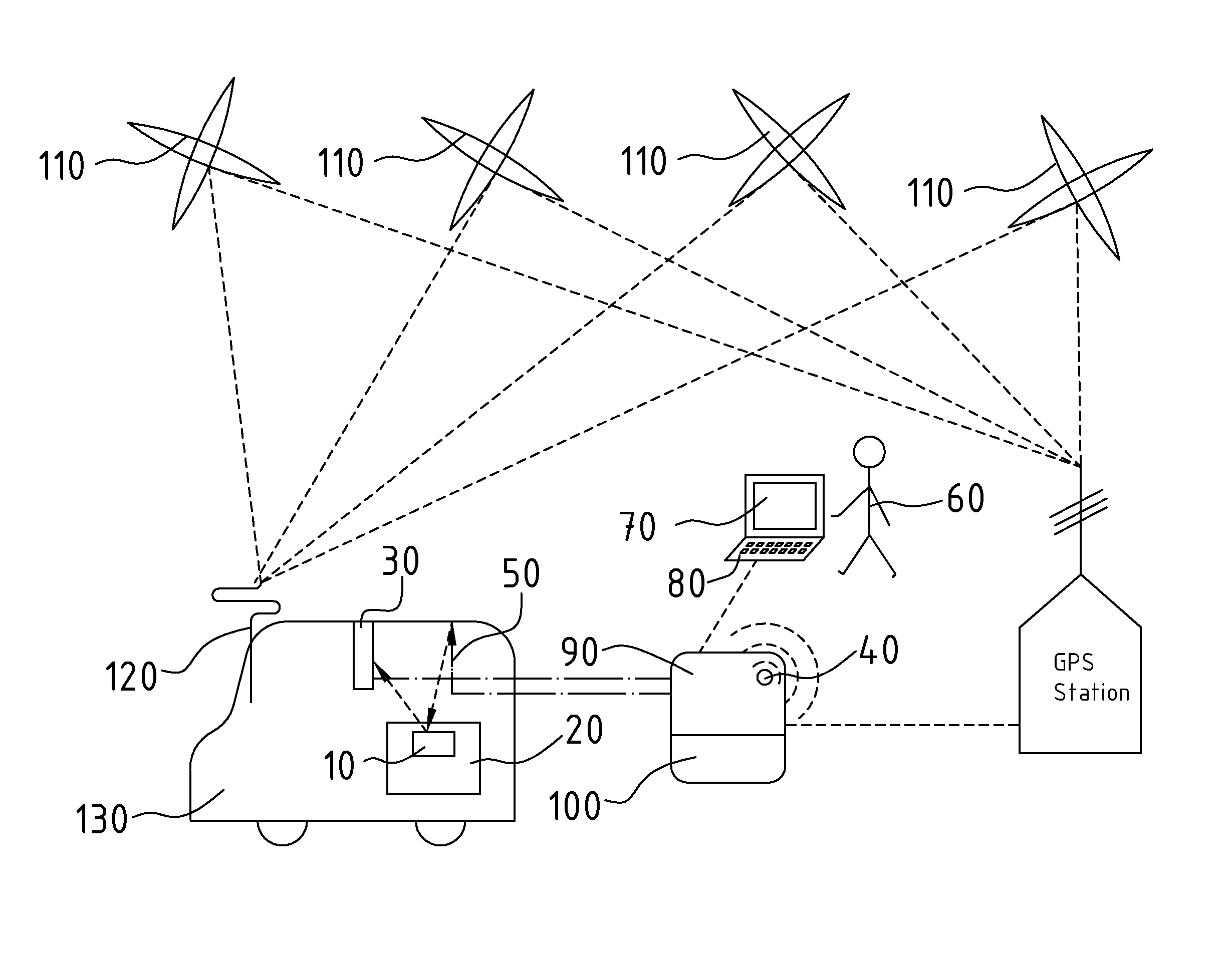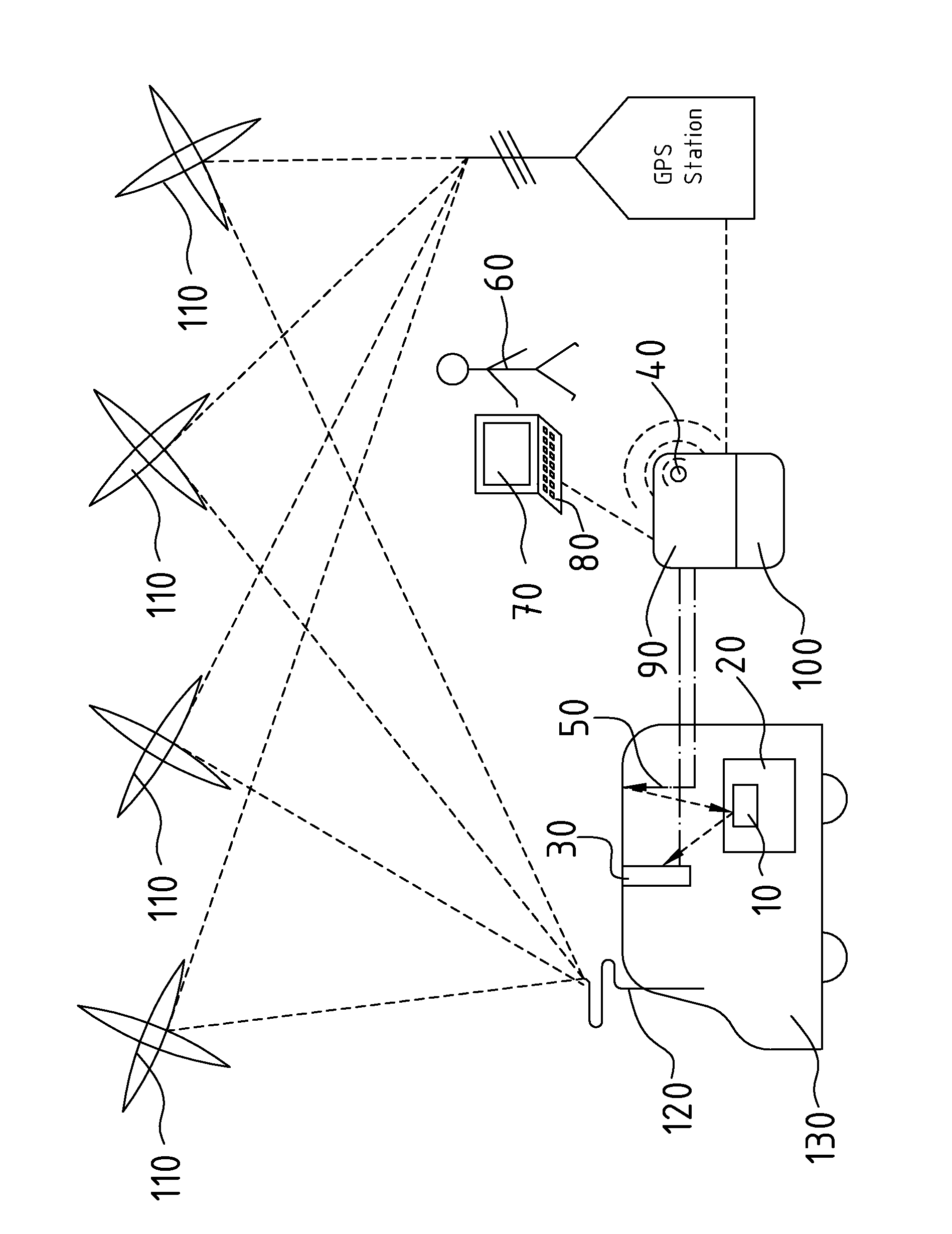Monitoring device for a tracking system
a tracking system and monitoring device technology, applied in the field of monitoring devices for tracking systems, can solve the problems of easy loss or theft of articles, rendering them useless
- Summary
- Abstract
- Description
- Claims
- Application Information
AI Technical Summary
Benefits of technology
Problems solved by technology
Method used
Image
Examples
Embodiment Construction
[0044]Illustrated in FIG. 1, an exemplary tracking system adapted for use in a vehicle 130 includes a monitoring device that communicates with a RFID (radio frequency identification) tag 10, which may also be referred to as transponder that may be affixed to, or contained within, an article 20 to prevent the loss of the article.
[0045]The monitoring device periodically interrogates the RFID tag 10, sending an RF signal from a RFID antenna 50 that is received by the RFID tag 10. When interrogated, the RFID tag 10 sends a response to the RFID reader 30, the response including a unique identification code. The RFID reader 30 verifies that the RFID tag 10 responds to the interrogation. If the RFID tag 10 does not respond to the interrogation, the monitoring device sounds an alarm. Thus, given a finite distance that the RFID antenna 50 of the monitoring device can transmit its interrogation signal, as well as a (typically shorter) finite range that the RFID tag 10 can transmit its respons...
PUM
 Login to View More
Login to View More Abstract
Description
Claims
Application Information
 Login to View More
Login to View More - R&D
- Intellectual Property
- Life Sciences
- Materials
- Tech Scout
- Unparalleled Data Quality
- Higher Quality Content
- 60% Fewer Hallucinations
Browse by: Latest US Patents, China's latest patents, Technical Efficacy Thesaurus, Application Domain, Technology Topic, Popular Technical Reports.
© 2025 PatSnap. All rights reserved.Legal|Privacy policy|Modern Slavery Act Transparency Statement|Sitemap|About US| Contact US: help@patsnap.com


